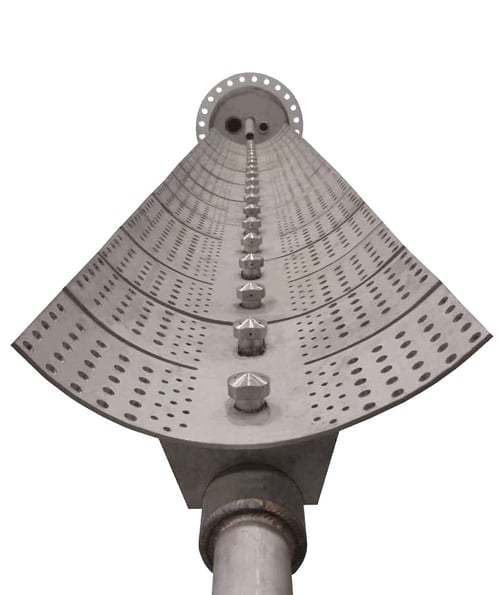
This document describes Zeeco’s approach to designing the ZEECO® DB Series Low NOx burner to exceed environmental standards. To begin, this document defines each of the emissions normally associated with a duct burner (DB), and then provides insight to Zeeco’s zone-analysis approach to designing custom, low-emissions DB applications.
Duct Burner
A duct burner raises the temperature of air flowing through a large circular or rectangular duct. These burner systems consist of long runners that utilize the oxygen in the flow adjacent to the runners for combustion, rather than all air passing through a burner throat. Because of the long runner lengths in some applications, flow distribution in the duct is a critical parameter. Often times, these burners fire into turbine exhaust gas (TEG). Zeeco's engineers ensure each custom-designed DB application has sufficient oxygen and flow along the runner to achieve low emissions and short flame lengths.
Specifications
The DB series is compatible with all turbine configurations and heat recovery systems. These burners are available for gas only, oil only, or combination gas and oil firing. Gas burners consist of one or more linear runner-type assemblies. Burner runners may be mounted vertically or horizontally. Oil is fired transversely in a self-contained system. All fuel-firing assemblies are mounted inside an insulated ductwork section.
Summary
Stringent environmental regulations have prompted the development of low-emission duct burners for use in turbine exhaust systems. To address the emissions environmental issue, Zeeco has redesigned its duct burner element to reduce NOx, CO, and unburned hydrocarbons. The DB series burner uses the freejet mixing concept to combine the inert combustion products with the fuel gas before combustion occurs to form a new fuel composition that produces less thermal NOx emissions. The DB series design meets NOx emissions of 0.06 #/MM Btu (LHV) and 0.04# CO emissions for most typical applications.
Download Technical Paper